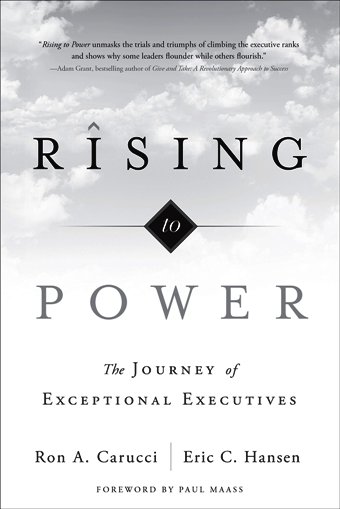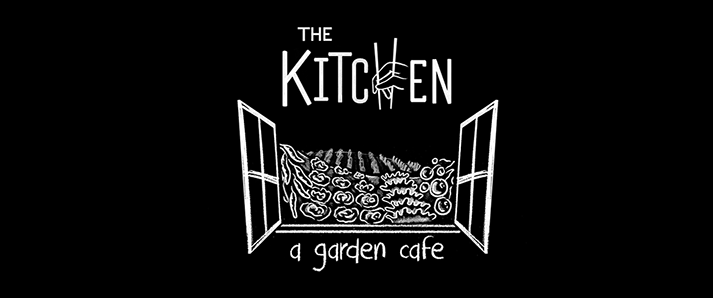— by Margie Doyle —
Rising to Power: The Journey of Exceptional Executives, written by managing partners at Navalent organizational consultants Ron Carucci and Eric Hansen, profiles successful 21st century executives and identifies the four essential characteristics for their achievement. In an interview with Carucci about the book, he points out those characteristics and also the “tripwires” holding up success in today’s rapidly evolving business climate.
Carucci, a founder of Navalent,(“Leading self — transformation within; Leading others — transformation between; Leading organizations — transformation among”) says the purpose of Rising to Power is to counteract the trend of failure of “much younger” executives who rise to leadership. “Our firm’s experience with executives is that half of all fail in the first 12-18 months,” said Carucci. “We wanted to stem the tide of this failure or it could get even uglier than it is.”
Working with data compiled over the last 10 years, the book says the four areas where executives must demonstrate mastery to excel are:
- Breadth: knowing the history, challenges and interactions within all sectors of your organization;
- Context: knowing the competition and the current climate of the marketplace and how that affects your organization;
- Choice: taking in the facts (data points) of the challenges in your organization and making clear decisions;
- Connections: engaging the relationships among peers, superiors and those supervised in line with the health and ethics of the organization.
The ascent to executive excellence is not easy, as this complex study points out. Early on in Rising to Power, Carucci and Hansen write:
Here is the harsh truth about executive leadership most career and leadership development literature won’t acknowledge. If you aspire to executive-level work and succeed at attaining it, you will inevitably suffer. Those roles come with a substantial cost that is rarely known going in. Looking only at the upside and never considering the pain only exacerbates a leader’s transitional shock once the reality is discovered. But you must equally embrace the fact that extraordinary privilege also accompanies these roles. This is not only in the perks and compensation package that come with the job, but also in the power and influence you will have to make tremendous impact on the organization and hundreds if not thousands of lives. The pain is necessary – it is the crucible that helps forge you into the executive you must become to serve the context in which you are leading.
Together the pain and privilege reveal great possibilities for both you and the organization.
Some of the information and skills executives must master are:
Breadth:
- understanding of the charter and contribution of each branch of company, how they work together;
- ways to improve the integrations of the organization;
- understanding the big picture to lead others through complexity.
Context:
- understanding my business model, its strength and weaknesses;
- tracking broader market trends, including negative ones;
- identifying alternatives to address threats, and options for near-term financial results;
- maintaining balance between current and potential business needs;
- seeking perspective from broad network.
Choice:
- assembling the pertinent analyses without becoming paralyzed;
- deciding with objectivity;
- disclose rationale behind choice;
- motivate by engagement;
- sacrifice personal gain for benefit of organization.
Connections:
- holding leaders accountable;
- gathering firsthand knowledge;
- willingness to disappoint others;
- finding ways to improve integration of the organization;
- rising above personal gain to ensure the organization’s success.
Carucci focused on some of the pitfalls as newer executives pursue “an evolutionary path” to “ascend, adjust, assert and affect” within their organizations.
One tripwire to succeeding at broader roles is the “mythical mandate” for successful business leaders to repeat past successes. The flaw in this thinking is relying on an old formula, rather than on the broader wisdom gained from previous experience, Carucci says.
When an “ousider” is brought into a position of leadership, he or she may be valued as a “fresh set of eyes.” Yet their executive leadership is often met with complaints such as “We’ve tried that before and it didn’t work.” It’s frequently “painfully humorous,” Carucci says.
Looking for answers and solutions, not opinions, is the way to address such a challenge. “What does the data we’re looking at say; what are the rival perspectives with the challenge at hand?” are some of the questions that must be answered, says Carucci. The “boss” must be willing to be honest and not protect a pet project. “That’s when the decision-making and information-gathering becomes critical to moving with the contextual knowledge.”
In the expanded “geography” of global business, the differences in how cultures define relationships, context and competition may become problematical.
Some cultures are better at a contextual understanding of competition and marketplace challenges, Carucci says: The level of hubris of U.S. executives makes contextualizing very difficult;and “that impacts their effectiveness”. By contrast, Korea’s position is “I have to learn;” and they are “an economic force of the first rank,”
Relationships present another pitfall: it is critical to reformulate relationships as a person attains more power and oversight in an organization. When professionals rise to the executive level in their field, Carucci says, “the high altitude of an organization” makes it difficult to forge authentic relationships with workers who may have been their peers. Maintaining trust among those you’ve “risen above” can be hard-won: “To overcome mistrust and truly win the hearts and minds is hard.”
In discussing the profiles of several business leaders who’ve achieved greatness as executives, Carucci clearly states, “Consensus doesn’t mean democracy and democracy doesn’t mean consensus. Decision-making is an arc: when to hear from whom; what to ask for; and when to make a call.”
That ties in with choices and decision making. “Leaders may disappoint you in their choices, but they still have to be in relationship with you.”
An executive’s breadth of understanding (wisdom) can be challenged by the constant innovations in communication technology that quickly make business models, products and protocols obsolete. The executive must be strategically adaptable and ready to turn on a dime; yet still navigate the “fine tension of when to hold the course, when to change, and when to close the doors of a business” that is obsolete beyond re-definition.
A collision of legacy and potential is often inherent in this climate. The Boomer generation may perceive the rise of young executives as precipitous, and call them “hyper-ambitious.” On the other side of the mirror, the “Millenials“ may feel their potential is muted; their frustration brings them to leave an organization. Carucci says, “They are socially-minded and an optimistic generation; they want to change the world and are ready to make an impact.”
The better response is to reform the mentor-prodigy relationship and “rethink how we work together” by taking a solution-oriented approach.“Connection and trust take on different meanings, and affect how we collaborate with emerging executives,” says Carucci.
In the end, the lasting impacts of an effective organizational leader are measured by:
- Employee engagement
- Customer satisfaction
- Number of products brought to market
That, rather than increasing company stock price, are the criteria for executive excellence; and in the new climate, it’s the mastery of context, breadth, decisions and relationships that ensure an organization’s success.
Rising to Power: The Journey of Exceptional Executives, published by Greenleaf Book Group Press, 2014.
**If you are reading theOrcasonian for free, thank your fellow islanders. If you would like to support theOrcasonian CLICK HERE to set your modestly-priced, voluntary subscription. Otherwise, no worries; we’re happy to share with you.**








